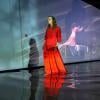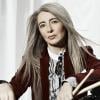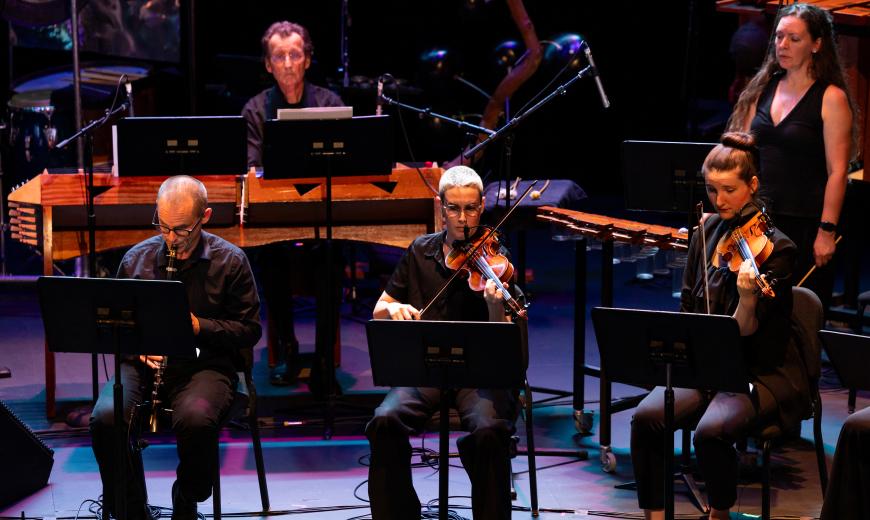
The first half of Los Angeles’ 20th century was marked by a deep connection to new music. And while the city may have counted world-renowned emigres from Arnold Schoenberg to Igor Stravinsky among its ranks, there was perhaps no composer more quintessentially Los Angeles than California native Harry Partch (1901–1974).
He was a tinkerer, an instrument inventor, and a curious student of global traditions. A trailblazer in Western art music’s employment of microtonality, Partch still serves as an important point of reference for several schools of contemporary composition, yet he has never been widely performed.
There was a sense of cosmic justice, then, in seeing Partch’s music celebrated with great enthusiasm before a hometown crowd on Saturday, June 15, when a packed house greeted the Grammy-winning PARTCH Ensemble at REDCAT.
The group’s presentation made for a rousing and joyous evening. The program paid loving homage to the best of Partch while also providing a showcase for composers who expand on his still underappreciated footprint.
Before the end of the concert’s first half, the ensemble’s founder, John Schneider, gave a brief overview of the composer’s philosophy, interspersed with audio of Partch’s 1942 lectures at the Eastman School of Music, during which he publicly introduced his harmonic schema. It was a lovely reminder, for the uninitiated and newcomers alike, of why Partch’s music sounds so fresh today.
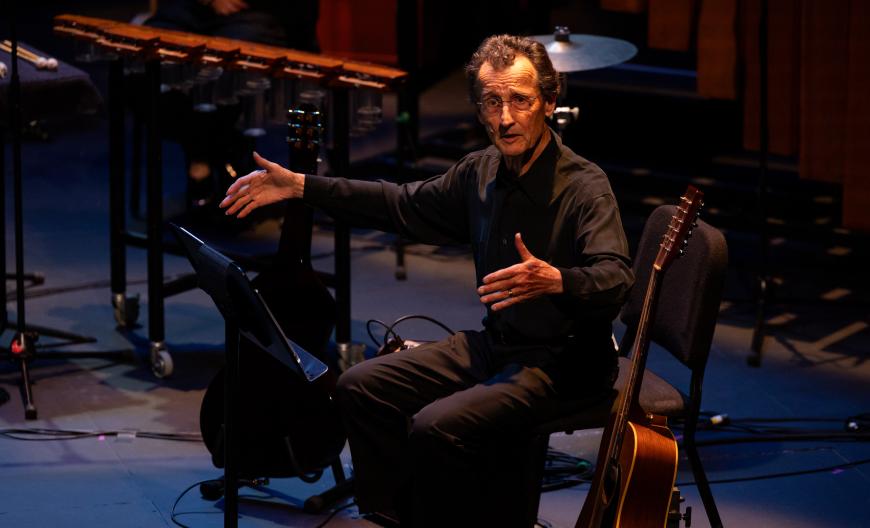
In the harmonic study Progressions Within One Octave, Vicki Ray, playing the chromelodeon (a reed organ that the composer adapted to cover the 43 tone divisions of his microtonal scale), outlined the chorale-like contours with style, maximizing the harmonic pulls between moments of consonance. Joined by the ensemble for Sonata Dementia (an orchestrated reinterpretation of Progressions), Schneider, on plucked, adapted guitar, added a bubbling charm.
Each of the other Partch works programmed paid tribute to an important element of the composer’s musical language, as well as introduced more invented instruments. The first of Partch’s Three Dances evokes an architectural sense of space between the groove of deep resonators (a fearsomely large bass marimba and Partch’s marimba eroica) and the plucked interjections of harp-like kitharas. The second dance, which opens with a melodic duet between an adapted viola (held and bowed like a cello) and chromelodeon, also features the syrupy slide of the zither-like instrument Partch named “harmonic canon,” combined with the adapted guitar.
Five Intrusions highlights Partch’s idiosyncratic but moving style of vocal writing, which uses his instruments to track the rises and falls in spoken intonation. The vocal interjections also show the humor that suffuses his work. (The last of the Three Dances, for example, breaks into a riotous rendition of “Happy Birthday.”)
In between these two sets was Jeffrey Holmes’s Reið (Raidō) II. A Schneider collaborator, Holmes has an interest in post-spectral music and “elements of mysticism and lyric expression,” placing his compositions in a similar register to Partch’s.
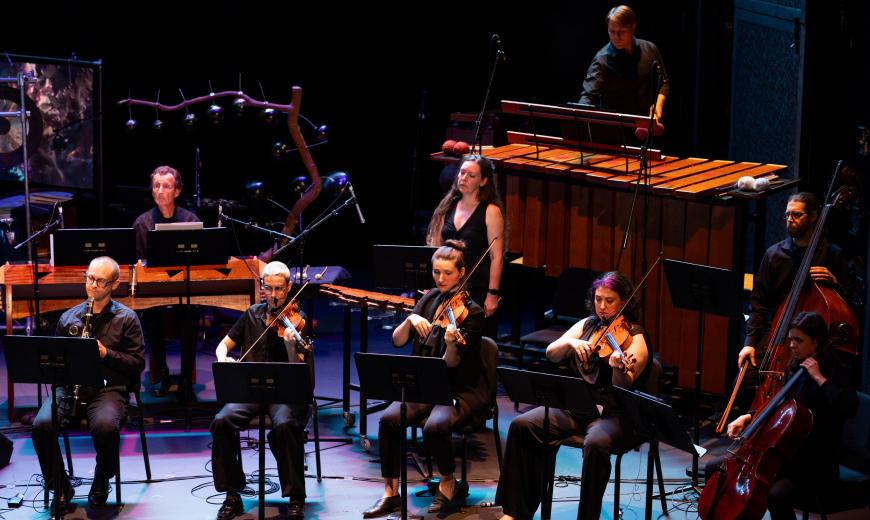
Holmes’s piece, which utilizes both Partch’s instruments and a variety of standard ones, groups the players into trios. It largely comprises two contrasting textures — stretches powered by a tripartite groove, augmented by polyrhythms played on Partch’s marimbas, against moments of stillness characterized by microtonal duets, played touchingly by harpist Alison Bjorkedal and pianist Todd Moellenberg, whose instruments were tuned apart “by the difference of a seventh partial of the overtone series.” The musicians handled both sets of materials ably, though the divide between instrumental groupings contributed to a sense of disjunction between sections.
The evening’s largest work, a semistaged performance of four scenes of Anne LeBaron’s opera-in-progress LSD: Huxley’s Last Trip, also utilized traditional instruments. PARTCH Ensemble was joined for the work by the Isaura String Quartet, clarinetist Brian Walsh, bassist Scott Worthington, and conductor Andreas Levisianos. Here, the integration was strong. Erin Barnes’s virtuosic diamond marimba playing and Worthington’s substantive bass were often a bridge between the post-Romantic writing given to the upper strings and the spunky interjections of the Partch instruments.
LeBaron, a professor at California Institute of the Arts and, like Partch, a composer with a long California legacy, writes with compelling lyricism, which effectively showcased the evening’s talented singers. Soprano Nelle Anderson, who played Marilyn Monroe and Sex in LSD (one of the Love, Sex, Death trio), stunned with her buttery tone. Todd Strange (as Francis Crick and Timothy Leary) was triumphant and effortless across repeated high As and Bs. And Scott Graff’s emotive, spoken tendencies as Aldous Huxley fit the character’s informal role as narrator.
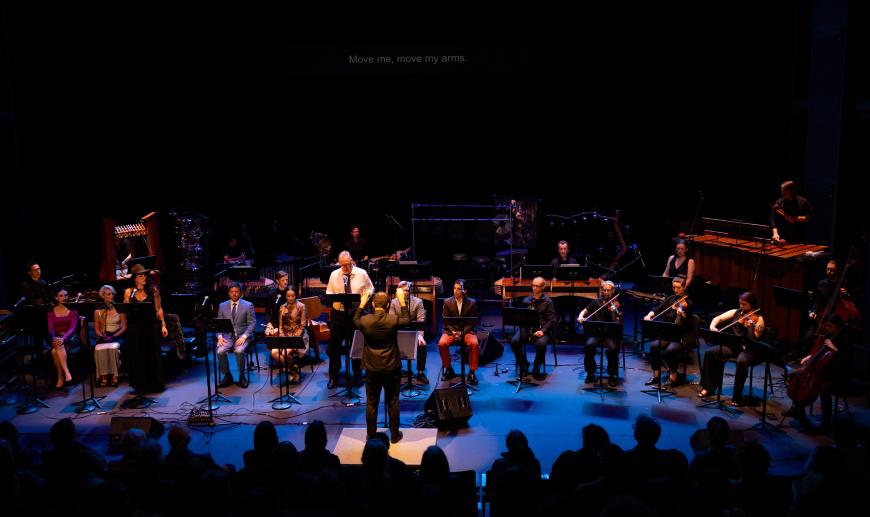
But the opera’s tendency toward anthology was at times distracting. In its quest to unite various historical figures through vignettes, it felt more like a history lesson than a musical work. LSD will undoubtedly speak more clearly when presented in full, which will hopefully happen soon.
It’s heartening to know that Partch and those who follow in his path — musicians attracted to harmonic and philosophical innovation — continue to have a home here in L.A.
Corrections: An earlier version of this article incorrectly identified the pianist for Reið (Raidō) II and the singer in the roles of Crick and Leary for LSD. We regret the errors.


